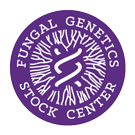Strain: Neurospora crassa
FGSC #981
Reporting Genes: pat
Species: crassa
Allele: no#
Alternate Strain Number: C3xP5 7-7
Depositor: AS
Linkage Group: IC
Mating Type: a
Genetic Background: M
ref1: Sussman et al '62 Am J Botany 49:657 (Abst) S247
Genes

Reporting Genes: pat
Species: crassa
Allele: no#
Alternate Strain Number: C3xP5 7-7
Depositor: AS
Linkage Group: IC
Mating Type: a
Genetic Background: M
ref1: Sussman et al '62 Am J Botany 49:657 (Abst) S247
